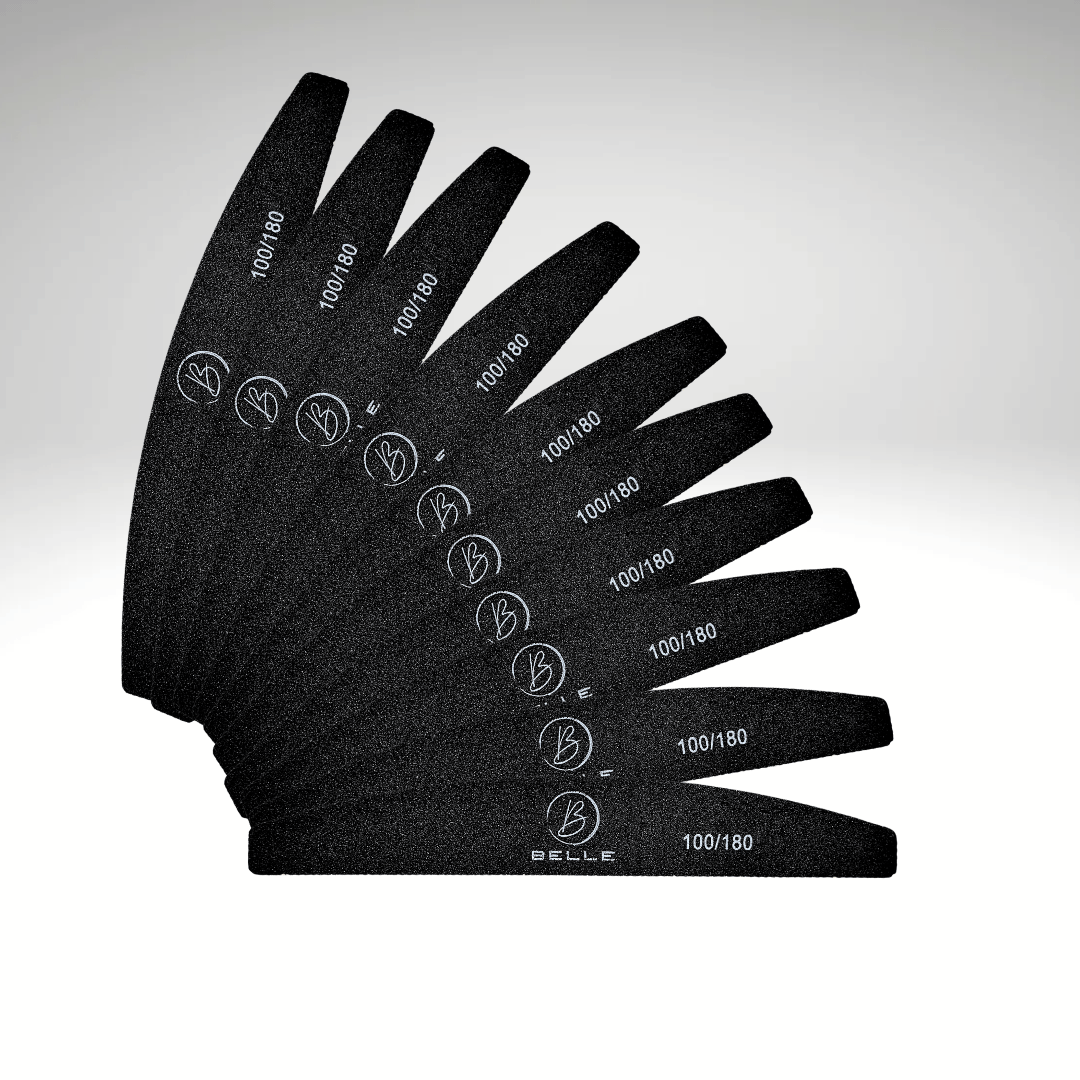How to Treat an Allergic Reaction to Gel Nail Polish
As an aspiring nail technician, you're likely to encounter a variety of challenges. One such challenge is dealing with allergic reactions to gel polish.
These reactions can be distressing for clients and may impact your reputation if not handled correctly.
Understanding how to identify, treat, and prevent these reactions is crucial. It ensures the safety of your clients and the success of your practice.
In this article, we'll delve into the topic of allergic reactions to gel polish. We'll discuss common symptoms, allergens, and immediate actions to take.
We'll also explore prevention strategies and the importance of continuing education.
By the end of this guide, you'll be equipped with the knowledge and skills to confidently manage such situations. Let's get started.
Understanding Allergic Reactions to Gel Nail Polish
An allergic reaction to gel nail polish is a response by the immune system to certain chemicals. These reactions are becoming increasingly common as gel nails rise in popularity. Knowing the difference between an irritation and an allergic reaction is vital for appropriate management.
Irritation typically occurs due to prolonged exposure and settles quickly. In contrast, an allergic reaction can cause more severe and lasting symptoms. These symptoms might not appear immediately, sometimes developing hours or even days after exposure.
Methacrylates are a group of chemicals often implicated in these allergies. These chemicals are vital for the adhesive quality in gel polishes. However, they can provoke allergic reactions in some individuals.
Key symptoms of an allergic reaction can include:
- Redness and swelling around the nails
- Severe itching or burning sensations
- Blisters or peeling skin
Understanding these fundamentals ensures that you can confidently identify and manage reactions. Being well-informed about allergens and symptoms is vital to keeping clients safe and satisfied.
Identifying the Symptoms
Identifying the symptoms of an allergic reaction to gel nail varnish is crucial. Common signs include redness, itching, and swelling around the nails. Some clients may also experience blisters or skin peeling.
In severe cases, symptoms might spread beyond the nails to surrounding skin. Clients often describe a burning sensation or intense itching. It's crucial to differentiate these symptoms from typical nail irritation.
Allergic reactions can also lead to the lifting or damage of the natural nail. Promptly recognising these symptoms allows for swift action, reducing potential long-term effects.
Common Allergens in Gel Polish
Gel nail polishes contain various chemicals that might cause allergies. Methacrylates, including methyl methacrylate (MMA) and ethyl methacrylate (EMA), are common culprits. These chemicals are necessary for the longevity and strength of gel nails.
Another potential allergen is toluene, which can irritate the skin. Some products also contain formaldehyde, a known sensitiser. Awareness of these chemicals is crucial when selecting and applying products.
Moreover, "5-free" or "7-free" products aim to reduce the risk of allergies. They exclude many of these irritants, offering safer options for sensitive clients. Understanding these common allergens helps in making informed product choices.
Immediate Actions for Managing Allergic Reactions
When faced with an allergic reaction, act swiftly. First, calmly reassure the client that you will manage the situation. It is important to remove the gel polish to stop any further exposure to the allergen.
Use a non-acetone remover to gently eliminate the varnish. Non-acetone removers are less irritating to already sensitive skin. Avoid scraping or filing harshly, as it can exacerbate symptoms.
Once the polish is removed, rinse the area with cool water. Avoid using soap initially, as it can further irritate the skin. Gently pat the area dry with a soft towel.
Observe the reaction. If symptoms appear severe or worsen, advise your client to seek medical help. Knowing when to refer a client for professional medical treatment is crucial.
Keeping a record of the incident is also essential. Document the products used and the reaction observed. This information will aid in preventing future allergies.
Safe Removal of Gel Nail Polish
Safe removal of gel polish is crucial when handling an allergy. Begin by soaking a cotton pad in a non-acetone remover. Place the pad on the affected nails and wrap them in foil to prevent evaporation.
Allow the remover to work for several minutes. This process helps dissolve the polish gently. Avoid pulling or scraping the polish off, as this can damage the nail bed and irritate the skin.
Once the gel lifts, gently slide the polish off. If resistance is met, reapply the remover and wait a bit longer. Patience ensures that the removal process is as gentle as possible.
Soothing Treatments and Aftercare
Following removal, focus on soothing treatments. Apply a cool compress to reduce swelling and discomfort. This helps to calm the skin and reduce redness.
Over-the-counter hydrocortisone cream can provide relief from itching and inflammation. Encourage the client to use it sparingly, following packet instructions. Hydration is also key—advise using a gentle moisturiser to nourish the skin around the nails.
Educate your client on aftercare and avoiding further exposure to potential allergens. Share the importance of patch testing before using new products in the future. These steps will help ensure healthier nail care practices and overall satisfaction.
Preventing Allergic Reactions in Your Nail Practice
Preventing allergic reactions is key to maintaining a safe and professional nail practice. Start by creating an environment that minimises allergen exposure. This includes ensuring proper ventilation and cleanliness.
Implementing the following practices can greatly reduce the risk of allergies:
- Use hypoallergenic and "5-free" or "7-free" products.
- Keep detailed client records, noting any past allergic reactions.
- Educate clients about the importance of informing you of any known sensitivities.
- Regularly update your first aid kit and include treatments for allergic reactions.
- Engage in continuous education to stay informed about allergens and safe practices.
Communication with clients is essential. Make it a priority to discuss potential allergies during initial consultations. Also, ensure that products are stored properly to maintain their integrity and prevent contamination.
Education and awareness are your best allies. As a nail technician, staying informed on product safety and allergy management will boost both your confidence and your clients' trust in your services.
The Importance of Patch Testing
Patch testing is an invaluable step in preventing allergic reactions. Before applying new products, test a small amount on the client's skin. This practice helps detect potential allergies before a full application.
Explain the patch testing process to your clients. Help them understand its importance in safeguarding their health. This simple step can prevent discomfort and ensure a pleasant experience.
Encourage clients to be proactive and always inform you of any past sensitivities. Their input is vital in selecting safe products and providing a positive nail care journey.
Choosing the Right Products
Selecting the right products is crucial in allergy prevention. Opt for high-quality, hypoallergenic options to minimise the risk of adverse reactions. Look for products labelled "5-free" or "7-free" to ensure fewer harmful chemicals.
Read ingredient labels carefully to identify common allergens. Avoid products containing methacrylates, often linked to allergic reactions.
Consult with suppliers about the availability of safe alternatives. These choices, coupled with client education, lay the groundwork for a successful and safe nail practice.
Legal and Ethical Considerations for Nail Technicians
As a nail technician, understanding your legal and ethical responsibilities is vital. Clients trust you with their health and safety. This trust requires professionalism and knowledge about allergy management.
Liability insurance is a must-have. It protects both you and your clients in the event of allergic reactions. Staying informed about local regulations concerning chemical use and product safety is crucial.
Ethically, transparency with your clients is non-negotiable. Clearly communicate the risks associated with products and procedures. Encourage clients to share any health concerns to provide the safest service possible.
Continuing Training and Client Communication
Continuing training is key in the fast-evolving world of nail care. Staying up-to-date with the latest products and techniques ensures you provide the best service. Pursue courses on allergy management and product safety to enhance your skills.
Client communication is equally important. Open discussions build trust and help prevent allergic reactions. Always encourage clients to voice any concerns or past experiences with allergies.
Transparency fosters a safe environment, vital for client satisfaction and retention. Keep them informed about the ingredients and safety measures in your practice. Educating your clients can empower them to make informed decisions.
Conclusion and Professional Development Tips
Managing allergic reactions to gel nail polish requires knowledge and preparation. Prioritise client safety by staying informed and vigilant. Your dedication to professional development not only boosts your confidence but also reassures clients of your expertise.
Continuously seek education and share your insights with peers. This can enhance your practice and uplift the industry standards. Remember, a proactive approach to learning and client care is invaluable in building a thriving nail career.









